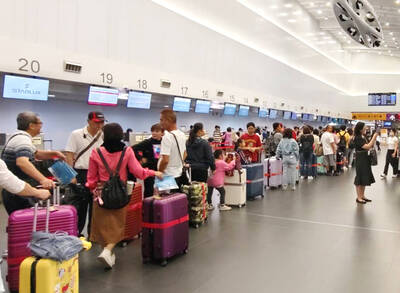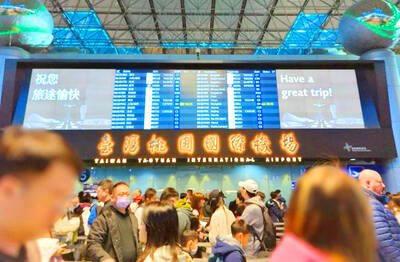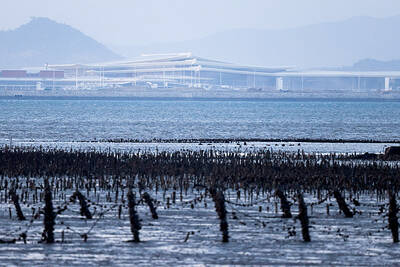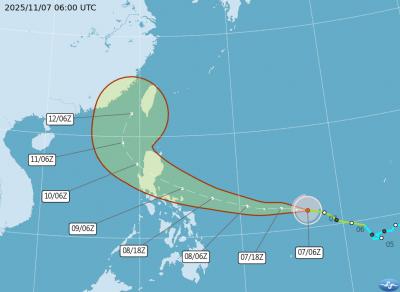While the pan-green camp is conducting its legislative campaign with the clear, unified goal of gaining a legislative majority, the pan-blue camp's strategy -- or rather, lack thereof -- has become a major weakness in its candidates individual campaigns.
USELESS POLITICAL DISPUTES
Chinese Nationalist Party (KMT) chairman Lien Chan (連戰) and People First Party James Soong (宋楚瑜) have kept reciting the mantra "no truth, no president," and hammered away at national issues. But few pan-blue legislative candidates are following up on those disputes in their own legislative campaigns, preferring instead to focus on more parochial concerns.
"The political issues do not have much impact in Tainan County, and basically the pan-green and the pan-blue territories have stabilized," Chinese Nationalist Party (KMT) Legislator Lee Chuan-chiao (李全教) said.
"The grassroots voters mainly care about what candidates can contribute to the region; they are concerned with regional development," Lee said.
Lee's opinion is shared by many pan-blue candidates in the south, who said that they focused on local issues and highlighted their personal image in their campaigns.
A top aide to a heavyweight KMT legislator in Taipei City pointed out that unlike the greens, the pan-blue camp was adopting neither joint campaigns nor a joint vote-allocation system.
"In the presidential election the pan-blue camp was already unable to offer much except a platform to improve the economy," the aide said. "So it is even more difficult to come up with a unified campaign strategy in the legislative election. Each candidate only cares about his or her own campaign."
The aide pointed out that although the pan-blue party headquarters has called for maintaining a pan-blue legislative majority so that the opposition can continue to monitor the government, most candidates instead are focusing on promoting their own personal traits and visions.
Democratic Progressive Party (DPP) legislator-at-large Lin Cho-shui (
"There is really no substantial campaign doctrine in the pan-blue camp," Lin said. "The only thing they've got is pursuit of `the truth' of the March 19 shooting incident. But this has repulsed the public."
"The PFP has worked harder than the KMT in pursuit of the `truth,' so the PFP is hurt even more. My prediction is that the PFP will lose many seats in the election," Lin said.
JOINT CAMPAIGN? WHAT JOINT CAMPAIGN?
When it comes to the possibility of a joint campaign or vote-allocation system, the pan-blue candidates just can't seem to get their act together.
In the pan-green camp, the Taiwan Solidarity Union and DPP candidates also have tensions, with both parties complaining about having their votes stolen by the other. But at least in some legislative districts, they have set aside differences and are running joint campaigns and joining together in vote-allocation systems.
Not so in the pan-blue camp, where the PFP complains about the KMT being unwilling to share votes, while the KMT whines about PFP candidates stealing their votes. Even worse, the KMT hasn't even been able to coordinate a joint campaign within its own party.
KMT Legislator Lin Nan-shen (林南生), who is running in Tainan City, complained about PFP candidate Kao Si-po's (高思博) request to share the pan-blue votes.
"Why should the PFP be allowed to share our votes?" Lin asked.
Lin said that while the KMT candidates have gone through a primary in order to win nomination, the PFP candidates have not -- so they should not ask for joint vote allocation with the KMT candidates.
THE MA STARDOM
Furthermore, while most are eager to have Taipei Mayor Ma Ying-jeou's (馬英九) endorsement, few KMT candidates in the south are enthusiastic about being associated with Lien.
Many candidates in the south printed Ma's endorsement or a photo of Ma on their campaign materials, but Lien is almost invisible.
"I don't think Lien is necessary, and I don't think he should come [to campaign]," a KMT lawmaker in the south said.
Other KMT lawmakers shared that sentiment and said that Lien's time had passed. By asking for Ma's support, they are pinning their hopes on a new generation of leadership.
Speculation about the new pan-blue leadership is also readily apparent. Ma's face is everywhere on campaign material, but Legislative Speaker Wang Jin-pyng's (王金平) face, like Lien's, is rarely seen.
But Ma's popularity is in some cases being abused. In Pingtung County, where fugitive Wu Tzer-yuan's (伍澤元) younger brother Wu Chin-lin (伍錦霖) is running for a seat, a signboard with a photo of Wu and the supposedly incorruptible Ma reads "Ma Ying-jeou recommends the best candidate."
Wu Tzer-yuan was convicted of corruption and fraud for his involvement, as a then-KMT member and director of the Taiwan Provincial Government's Planning and Development Department, in a kickback scandal over the 1992 Sipiantou water-pumping station project for Taipei County. Many pan-blue candidates in the south have also tried to downplay their party orientation in their campaign material.
Some, like Lee in Tainan County, have chosen to replace the party emblem with the more discreet background of a blue sky and white clouds, the KMT colors.
Even the PFP's most well-known hardliner, Chiu Yi (邱毅), hasn't exactly been eager to demonstrate his party orientation on his billboards and campaign materials. That's in part because he is running in Kaohsiung City, where pan-green supporters outnumber pan-blue supporters, according to recent election results.
KMT lawmaker Hsu Chung-hsiung (徐中雄), for one, showed anger upon hearing that the candidates in the south were eschewing the KMT emblem.
"We should condemn these candidates for not sticking up for the party," Hsu said, adding that he was proud to use the party emblem. "This shows that I am pure blue, unlike many who are `tainted' blue."

Three Taiwanese airlines have prohibited passengers from packing Bluetooth earbuds and their charger cases in checked luggage. EVA Air and Uni Air said that Bluetooth earbuds and charger cases are categorized as portable electronic devices, which should be switched off if they are placed in checked luggage based on international aviation safety regulations. They must not be in standby or sleep mode. However, as charging would continue when earbuds are placed in the charger cases, which would contravene international aviation regulations, their cases must be carried as hand luggage, they said. Tigerair Taiwan said that earbud charger cases are equipped

Foreign travelers entering Taiwan on a short layover via Taiwan Taoyuan International Airport are receiving NT$600 gift vouchers from yesterday, the Tourism Administration said, adding that it hopes the incentive would boost tourism consumption at the airport. The program, which allows travelers holding non-Taiwan passports who enter the country during a layover of up to 24 hours to claim a voucher, aims to promote attractions at the airport, the agency said in a statement on Friday. To participate, travelers must sign up on the campaign Web site, the agency said. They can then present their passport and boarding pass for their connecting international

UNILATERAL MOVES: Officials have raised concerns that Beijing could try to exert economic control over Kinmen in a key development plan next year The Civil Aviation Administration (CAA) yesterday said that China has so far failed to provide any information about a new airport expected to open next year that is less than 10km from a Taiwanese airport, raising flight safety concerns. Xiamen Xiangan International Airport is only about 3km at its closest point from the islands in Kinmen County — the scene of on-off fighting during the Cold War — and construction work can be seen and heard clearly from the Taiwan side. In a written statement sent to Reuters, the CAA said that airports close to each other need detailed advanced

Tropical Storm Fung-Wong would likely strengthen into a typhoon later today as it continues moving westward across the Pacific before heading in Taiwan’s direction next week, the Central Weather Administration (CWA) said. As of 8am, Fung-Wong was about 2,190km east-southeast of Cape Oluanpi (鵝鑾鼻), Taiwan’s southernmost point, moving westward at 25kph and possibly accelerating to 31kph, CWA data showed. The tropical storm is currently over waters east of the Philippines and still far from Taiwan, CWA forecaster Tseng Chao-cheng (曾昭誠) said, adding that it could likely strengthen into a typhoon later in the day. It is forecast to reach the South China Sea